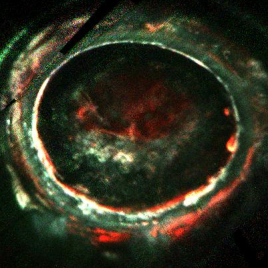An infant can tell a fearful expression from a happy one as early as three months after being born, results of a new study suggest. Fear detection is an important evolutionary mechanism and is thus developed at a young age, but present research is the first to show a precursor to this important ability. To examine this, researchers showed a group of 192 3.5-, 6- and 12-month-old infants fearful and happy faces, mixed with pure noise. Their data showed that even the youngest group—3.5-month-old infants—held attention significantly longer on fearful faces than happy ones. Study authors say that being ready to detect fear could increase early experience with this expression, leading to more attention to fearful faces later on.
Authors:
Laurie Bayet, Paul C. Quinn, Rafael Laboissière, Roberto Caldara, Kang Lee, Olivier Pascalis
Corresponding author:
Laurie Bayet, University of Rochester, Email: laurie.bayet@childrens.
Canadian author:
Kang Lee, Dr. Eric Jackman Institute of Child Study, University of Toronto, Toronto, ON, Email: kang.lee@utoronto.ca
Original paper published in the Proceedings of Royal Society B: Biological Sciences on September 6, 2017.
